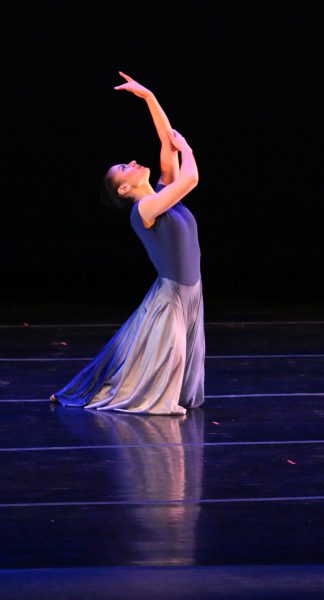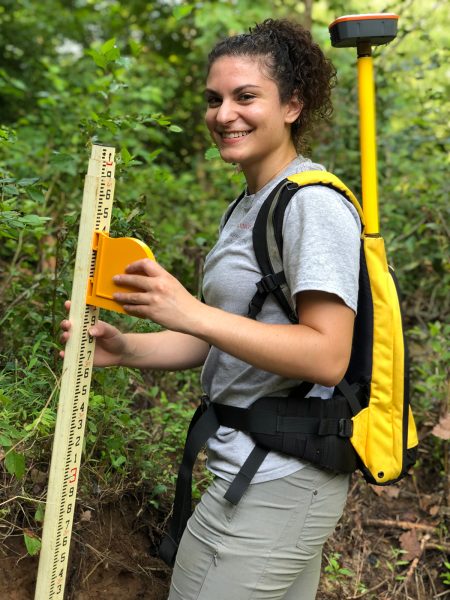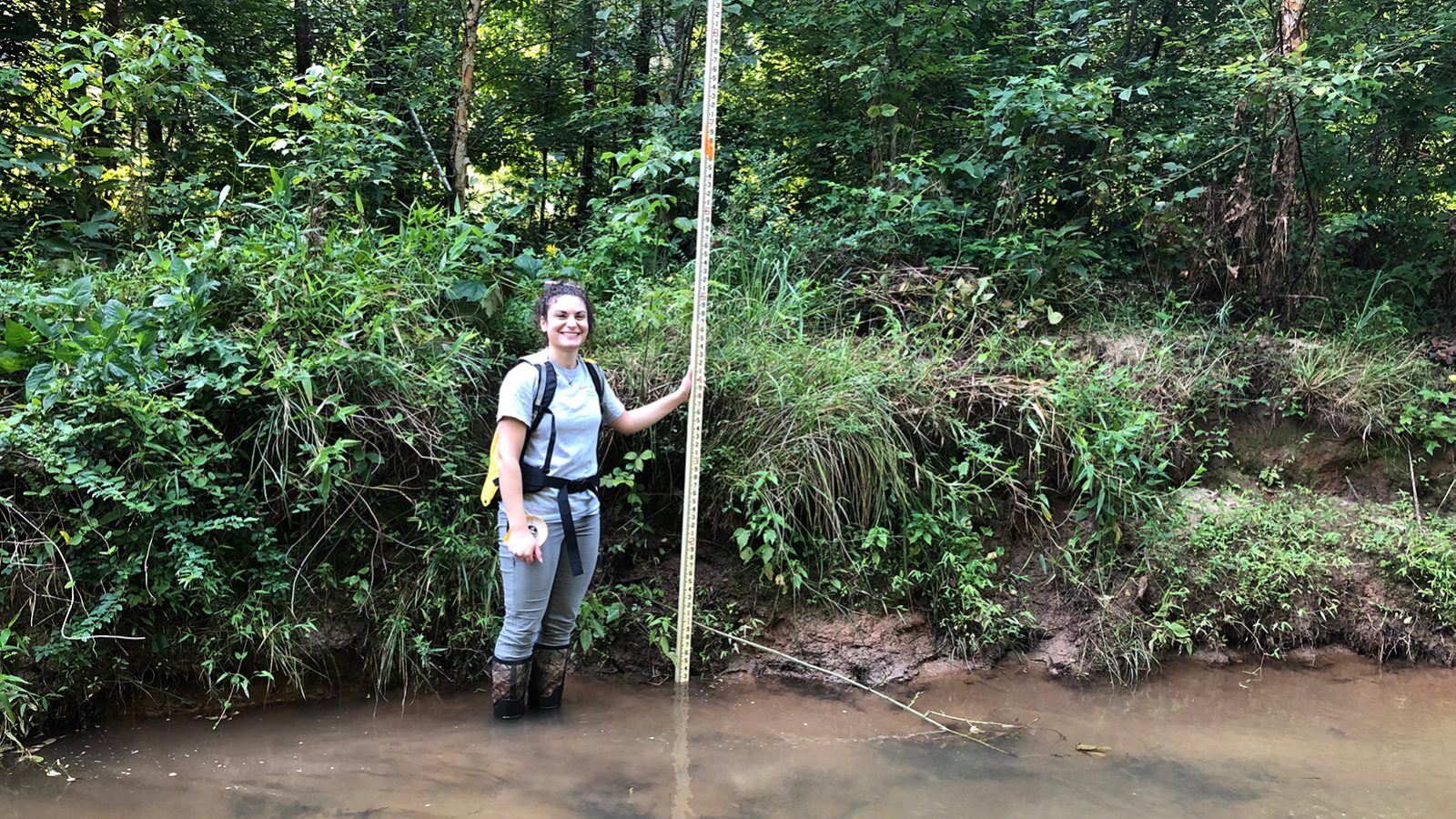Layla El-Khoury enjoys solving problems. She also enjoys dancing. An engineering student in the M.S in biological and agricultural engineering program, and undergraduate alumna of the BAE department, she found a way to merge her interests into a choreographed dance piece of her graduate thesis on streambank erosion.
The dance piece, titled Force of Flows, demonstrates what some educators refer to as STEAM, an acronym for Science, Technology, Engineering, Arts and Mathematics.
“Dance, or any of the arts, can be used as a way to communicate information that someone may not necessarily seek out or understand,” El-Khoury says. Her intention with Force of Flows is to educate others on the topic of streambank erosion and its impact on North Carolina communities.
Sources of Inspiration
El-Khoury began dancing when she was three years old. Her interest shifted from an extracurricular activity in her formative years to a discipline when she reached middle school. By the seventh grade, she joined the Raleigh Dance Theatre, a pre-professional company for 12 to 18-year-olds.
“I was at dance four or five days a week,” she says. “I would start my homework when I got home around eight or nine o’clock at night. I learned you have to be very much on top of everything….and if you are really dedicated to something, it might mean missing out on other things.”
 Fueled by her love of dance, she explored different styles and discovered a fondness for contemporary ballet.
Fueled by her love of dance, she explored different styles and discovered a fondness for contemporary ballet.
“With ballet, you want it to look effortless. It has this feeling of being very light and airy. With modern dance, it’s barefoot and very grounded into the floor. It has a heavier movement quality,” she explains. “Then you’ve got contemporary ballet, which is kind of where you’re combining the technique of ballet and blending it with the freedom of movement from modern.”
El-Khoury also excelled in her academic achievements, specifically in the areas of science and math.
She briefly studied dance and engineering at the University of Michigan until a desire to be closer to her family brought her back to North Carolina. While at UoM, she developed an interest in choreography and wanted to share techniques she had learned with the Raleigh Dance Theatre dancers to help them reach their fullest potential.
“I wanted to share what I learned because I understood how it could benefit others,” she explains.
“I was also looking at different engineering programs, and BAE was something that fit all of my interests because of its focus on the environment and sustainability.”
Merging Disciplines
El-Khoury graduated in May 2020 with a bachelor’s degree in biological engineering with an environmental concentration. During her undergraduate studies, she was recognized with the BAE Sophomore Award and the recipient of the Charlie and Jane Suggs Distinguished Scholarship.
She also conducted undergraduate research, including an analysis of National Oceanic and Atmospheric Administration (NOAA) weather data to predict freeze dates in the spring and fall seasons.
 El-Khoury cites a course with Extension associate professor and specialist Barbara Doll, who is now her advisor in the master’s program, as the source of her interest in stream restoration. Her graduate research focuses on quantifying and predicting streambank erosion using geospatial and field-based methods.
El-Khoury cites a course with Extension associate professor and specialist Barbara Doll, who is now her advisor in the master’s program, as the source of her interest in stream restoration. Her graduate research focuses on quantifying and predicting streambank erosion using geospatial and field-based methods.
Streambank erosion causes increased sediment to build-up in waterways, reducing water quality and negatively affecting habitats surrounding those areas.
“The research is important and novel because it seeks to evaluate the accuracy of both established, widely-used methods and new approaches for determining stream bank erosion rates,” she says. “These efforts will help identify the best method to estimate erosion based on the stream dimensions and surrounding conditions. The results will also be leveraged, along with newly developed geospatial datasets, to evaluate the potential of identifying and prioritizing streambank erosion using a GIS-based desktop analysis.”
Ultimately, the research will help state and federal agencies and conservation groups maximize resources by determining which areas to target and focus restoration efforts.
The Act of Restoration
El-Khoury had considered a performance around her graduate thesis, but her motivation to pursue such an endeavor occurred at the peak of the pandemic.
In spring 2021, she contacted director of NC State Dance Program Tara Mullins about enrolling for an independent study. “We’re excited about her work because of the approach that she took. She’s representing something that is truthful and also scientifically accurate.”
Force of Flows occurs in two sections. The first includes narration so the audience is exposed to terminology and has an understanding of what the performance represents. The second section is the physical composition on the evolution of a river.
“NC State is unique because we make accessibility to arts a priority for our campus,” says Mullins. “Being able to combine STEM and all majors with the arts in an integrated, highly engaged way improves the creative and critical thinking processes for our students and the audience.”
The Dance Program Fall Concert includes eight dances and one screendance including choreography by Adrian Haywood, Kassandra Taylor Newberry, Shayla Taylor, Tara Z. Mullins, and Student Choreographers, performed by Panoramic Dance Project, State Dance Company, and Independent Study in Dance students.
The Fall Concert took place in Stewart Theatre, Nov. 11 and Nov. 12, 2021.

